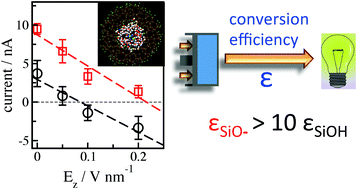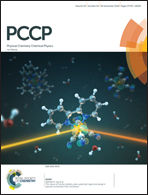Electrokinetic flow of an aqueous electrolyte in amorphous silica nanotubes
Abstract
We study the pressure-driven flow of aqueous NaCl in amorphous silica nanotubes using nonequilibrium molecular dynamics simulations featuring both polarizable and non-polarizable molecular models. Different pressures, electrolyte concentrations and pore sizes are examined. Our results indicate a flow that deviates considerably from the predictions of Poiseuille fluid mechanics. Due to preferential adsorption of the different ionic species by surface SiO− or SiOH groups, we find that a significant electric current is generated, but with opposite polarities using polarizable vs. fixed charge models for water and ions, emphasizing the need for careful parameterization in such complex systems. We also examine the influence of partial deprotonation of the silica surface, and we find that much more current is generated in a dehydrogenated nanopore, even though the overall efficiency remains low. These findings indicate that different methods of nanopore preparation, which can produce a range of surface properties, should be examined more closely in the related experimental methods to generate electrokinetic current.

- This article is part of the themed collection: 2018 PCCP HOT Articles


 Please wait while we load your content...
Please wait while we load your content...
